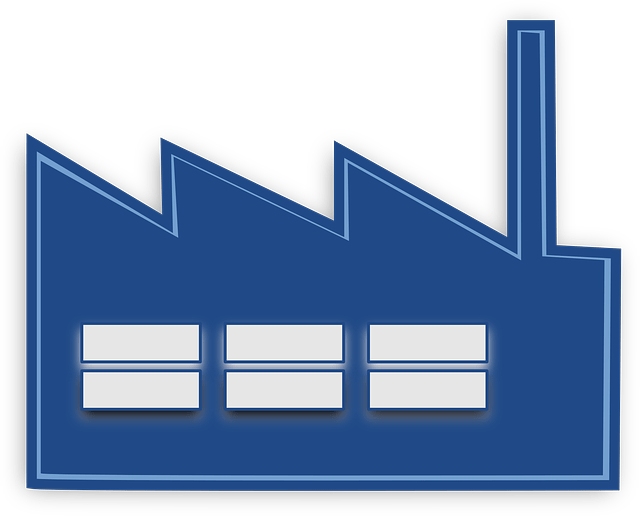The right database makes a great difference in the extraction of important insights from organizational data. This world of data management and analytics has traditionally been done with the use of databases for many years, but now, with cloud computing gathering momentum, a host of new innovative options such as Data Warehousing with Snowflake are open.
Table of Contents
What is a Data Warehouse?
The data warehouse represents a large storage hub for the company’s information, which is integrated from different resources such as sales, marketing and customer accounts. It does not involve those databases utilized in day-to-day transactions; instead, it maintains historical data for analysis reasons so that business firms trace trends and patterns. This is a central platform from where any business firm easily mines all its information for better decision-making.
Snowflake is an excellent choice for companies in modern times seeking ways to store and analyze data. Snowflake, the technology company, facilitates businesses with their data through a cloud data warehouse for storage and analytics, thereby making it easier for them to understand the insights from their data to drive better decisions.
What is Snowflake?
Snowflake is not just a data warehouse; it’s an all-in-one data hub. It’s good for storing information in a data warehousing fashion, analyzing large amounts in a data lake, creating tools to work with in data engineering, using it to find out trends in data science and even building applications based on it. All this data is shared securely with others in real time.
The Data Cloud Platform is a cloud-based data warehousing and analytics solution that allows organizations to store, manage and analyze large volumes of data in a scalable and efficient manner.
This blog discusses the key differences between Snowflake and traditional databases and determines why Data warehousing with Snowflake is superior for modern data warehousing and analytics.
1. Scalability and Flexibility
Traditional databases fail when it comes to handling large volumes of data and complex queries. Because Snowflake is built on the cloud, it separates its storage apart from computing to independently scale and offer even greater flexibility for scaling. With this, companies handle fluctuating workloads with ease and avoid all limitations of a traditional system.
2. Cloud Speed
Unlike on-premise databases, Snowflake is built for the cloud. This is because of its cloud-native architecture, which, among other things, has numerous advantages to it. Snowflake utilizes the distributed computing of cloud providers. Consequently, this translates into faster processing, thereby offering better performance. This would free a company from the headache of hardware management and allow a firm to pay only for the resources utilized, hence driving down costs.
3. Unified Data View
Traditional databases cannot manage the integration of several data sources. Snowflake do that and much more. It provides perfect data integration to assist business firms in combining structured and semi-structured data coming from different sources into one single platform. This unified view of data thus provided encourages analysis and extracts more usable insights.
4. Handles High Demand
With increased simultaneous users or applications, traditional databases begin to experience slowed performance. Because Snowflake features a multi-cluster design, each query runs in its own independent environment, thus maintaining performance predictable and consistently fast, even as user activity gets heavy. That would make Snowflake a perfect fit for organizations requiring speed in query execution and real-time analytics.
5. Fast Value, Easy Use
Setting up and maintaining traditional databases is complex and extremely labor-intensive. Snowflake is far simpler to use, with an intuitive user interface as well as an SQL-based query language that feels quite familiar. It also offers automated performance optimizations, automatic scaling and built-in data management to lower the administrative burden on an IT organization. Ease of use and speed to value is one of the main reasons people find the offering so compelling.
The Modern Choice for Data Insights
The architecture of the Data Cloud Platform is cloud-native, scalable, integrates data, has superior performance and is very easy to use. All these features make this platform superior compared to traditional databases. Doing Data Warehousing with this solution, handling large volumes of data, ensuring high concurrency and offering near real-time analytics insights, positions it perfectly in the evolving world of data warehousing and analytics. With this platform, organizations unlock all the potential in their data to derive key insights and make data-driven decisions to drive innovation and growth.

Benefits of Snowflake Data Cloud
• Simplified Data Sharing
Snowflake replaces the hassle of sharing data with external partners or other organizations. That way, it helps ensure that only those people who should have access actually have access to the granular details, even down to specific columns. It ensures that data is not just protected but enables easy collaboration with the external teams.
• Virtual Warehouses
Snowflake’s virtual warehouses are decoupled from the storage, thereby allowing them to spin up or down for any particular workload. Want to run a complex query? Fire up a larger virtual warehouse for that particular task and shut it off when you’re done to optimize costs.
• Multi-Cluster Architecture
Snowflake segregates various types of workloads across several virtual warehouses. This essentially means that different users run queries or the processing of data without degradation in performance for one another, unlike in traditional data warehouses where different users are sharing the same pool of resources. These segregated performances will ensure consistency for all-a performance that does not depend either on individual query complexity or a number of concurrent users.
• Zero-Downtime Scaling
Adding and removing compute resources happens seamlessly in Snowflake. This means the scaling of your data warehouse up or down, based on real-world demand, can be performed never having to take it offline for maintenance or upgrades. This gives you continuous availability with your data warehouse for mission-critical data tasks-driving the least amount of downtime and most productivity for your users and applications.

Snowflake’s impact across various industries
Snowflake thus enables Data Cloud for all kinds of businesses around the world. Practical, very real examples are listed good-to-know from various industries as follows:
a) Healthcare
Snowflake’s value in healthcare extends further than just delivering one source of truth. Implemented, it acts as a collaborative workplace where the doctors, nurses and specialists share one view of the data on each patient to compose a personalized treatment plan. Snowflake enables researchers through the analysis of large volumes of patient data for enlightenment, thus translating into advancement in clinical research, development of new treatments and ultimately improved patient outcomes.
b) Finance
In the Finance industry, for ESG insights, at Snowflake, customers enable sustainability goals while reducing costs due to the consolidation of legacy systems. It will all result in strengthening customer relationships and fueling business growth by better understanding the needs and financial preferences of their customers and, finally, embedding personalized financial products and services. Because the financial industry is a heavily regulated sector, Snowflake simplifies compliance by maintaining data security and keeping it available for audits and reporting purposes.
c) Energy
This segment uses Snowflake in democratizing data processing and deploying machine learning. Its scalability and flexibility mean EDF can seamlessly deploy models and gain valuable insights in energy hub analytics to help their customers. It helps them optimize the grid because, with it, the energy companies will be able to analyze data on energy consumption patterns in real time. This helps the operationalization of the grid by optimizing and balancing demands and supply in a much more effective way, integrating renewable sources of energy effectively.
d) E-Learning
In e-learning, Snowflake will enable education institutions to offer the right learning experience to each individual student, thus helping to improve student engagement. Student performance data analytics enables educators to understand where students are struggling, hence making informed instruction. It makes it easier to build an adaptive learning platform that fits each student’s needs. Besides, Snowflake allows educational institutions to track student’s performance and thus target those students that lag behind early enough so timely intervention provided.
Only these few examples constitute some of the many use cases. Because it is cloud-based, Snowflake allows a wide range of benefits to apply across industries: breaking down data silos, ensuring scalability and fostering collaboration empowerment to make data-driven decisions and achieve success.
Snowflake houses a more modern solution. Snowflake separates storage and processing for easy scaling, boasts cloud-native speed and integrates diverse data sources. It meets high user demand and is user-friendly. The major powers it has are simply shared, virtual warehouses and zero-downtime scaling. Snowflake is used on the road to success for businesses of different industries.

How does Himcos help ?
We at Himcos provide the Snowflake’s implementation services and use its power to provide data warehousing and analytics services to businesses. Using Snowflake, our data experts transform their messy data into actionable insights, driving innovation and success.



